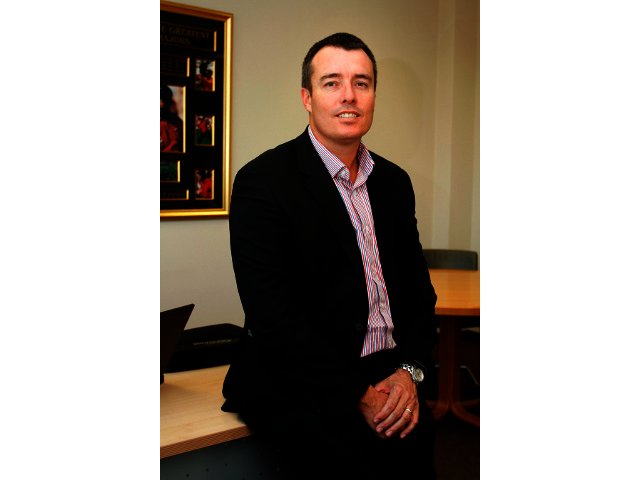Microwave technologies have a valuable role to play, but service providers and technology need to evolve to meet different market demands, as well as being able to act on new opportunities, according to Hendrik du Plooy of Broadlink. He adds that there are several key trends in the microwave space: in general, a higher demand for fibre in terms of backhaul and end-customer, but that there are still geographic limitations in many regions.
He says that microwave services still offer a viable and reliable redundancy solution even when the primary link is fibre, saying that there are numerous benefits to having primary and redundant links across different carriers or networks. The company has seen new and innovative ways to use existing technologies – for example recently there has been some movement in voice over Wi-Fi services, giving these networks a renewed source of appeal and ability to generate additional income.
As a result of cloud-based services being used in the enterprise space, du Plooy says that companies are moving away from MPLS-based solutions and individual users are looking for internet connectivity wherever they are to access business applications in public or private cloud networks. It is believed that for now and the foreseeable future, a combined fibre and microwave network or backhaul solution will offer the most expansive network reach, ultimately benefitting the customer. Partnerships are also important, allowing companies to evolve and stay relevant.
As an example, Radwin (a Broadlink partner since inception) and a global leader in sub 6GHz point-to-point and point-to-multipoint technology, has been providing high capacity backhaul links to operators around the world for various applications. One of its largest markets is for cellular backhaul for some of the largest operators in the world including small cells in non-line of sight environments, allowing Broadlink’s spectrum allocation to successfully implement long distance connectivity that is not affected by environmental conditions like rain, mist or fog.
There has also been a massive shift brought about by Peer2Peer (P2P) networking as businesses talk directly to businesses, business to consumer, and consumer to consumer. Some examples of these include: Alibaba – the world’s largest retailer, which owns no inventory; Uber, the world’s largest taxi operator, which owns no vehicles and Airbnb – the largest accommodation provider, which owns no real estate. Effectively, network providers are increasingly under threat of becoming a “dumb pipe”, simply connecting the P2P world, according to Peter Turvey, of Radwin.
Turvey agrees that traditional microwave vendors are coming under threat due to the emergence of fibre as the primary backhaul of choice for large operators and internet service providers. According to him, traditional microwave vendors are under threat as the need right now is for last mile access. For years operators have been building more and more capacity in their backhaul but now end customers are demanding higher capacity access to meet the exponential growth of data required across the board by both corporate and home user.
He gives the example of August’s Apple iPhone update 8.4.1, which was 1,79 GB when downloaded on iTunes and Microsoft Windows 10 upgrade, which was over 4 GB and at its peak was 8% of all internet traffic in August; and that there are thousands of users downloading and upgrading just these two systems, making large capacity backhaul a must, but what is clear right now, the requirement is for large capacity last mile access as well. He added that when considering private networks, traditional microwave can have some drawbacks, specifically in the licence exempt band of 17 GHz, and distances are typically shorter as anything further than 8 km requires very large antennae and are susceptible to environmental factors and high interference, and that the benefit of providers like Broadlink who operate in licensed frequencies is that these risks can be mitigated.
According to Turvey, the demise of WiMax as a technology has not been exaggerated. Due to its limitations for effective last mile high capacity throughput, operators and ISPs around the world are either upgrading, or are planning their upgrade. When customers are demanding 40 Mbps and greater services, and this is the entire capacity of a WiMax base station, then consideration has to be given to either a point-to-point solution, or a point-to-multipoint solution that meets the high capacity demanded.
LTE has gained wide adoption by operators for the consumer market due to better indoor penetration in the 2,1 GHz to 2,5 GHz spectrum, but as a technology the general sentiment, according to Turvey, is that it does not meet the demands required by SMEs and the enterprise market. He said that the demand is for quality of service and committed rates; a bank cannot expect to run its mission critical business at its branches on a best effort, over contended and at times, congested LTE technology.
Du Plooy says that whether a customer is looking for a private network, or a major mining company looking to make real time decisions hundreds of kilometres from their mining operations, there is no “silver bullet”, but that there are several options as opposed to one defined solution. Meeting the demands for connectivity is not simply providing a technology that delivers a 10% improvement in performance for backhaul, while at the expense of reliability, availability and scalability.
Broadlink’s view is that innovation is required and an ability to evolve as technologies, businesses and customers evolve.





